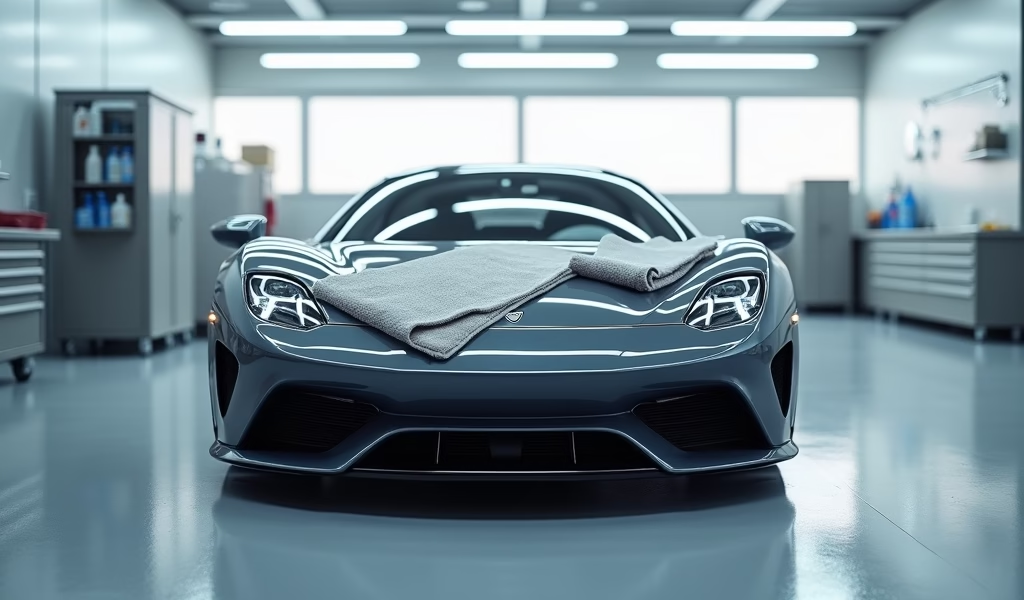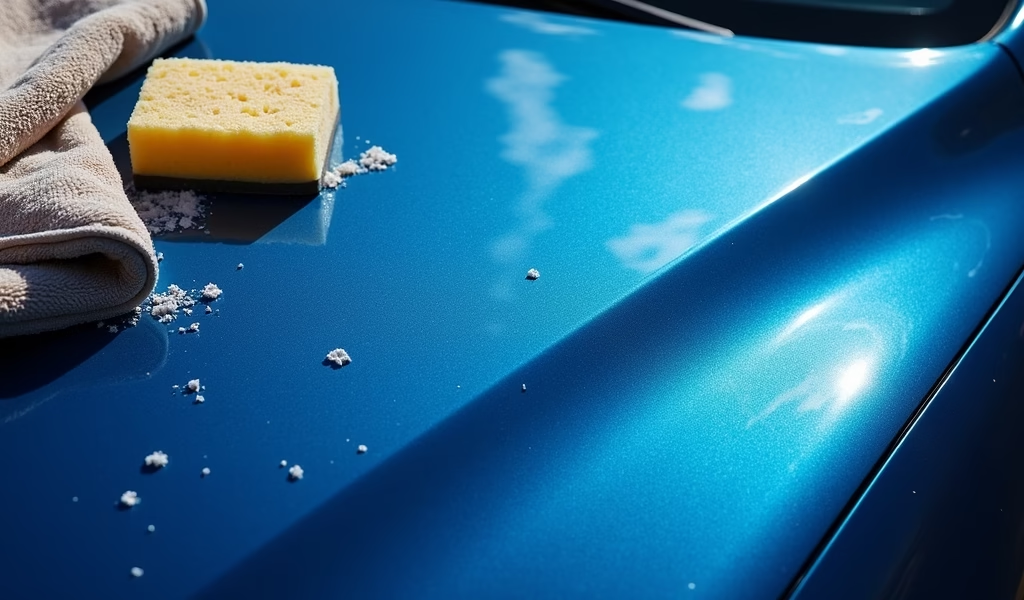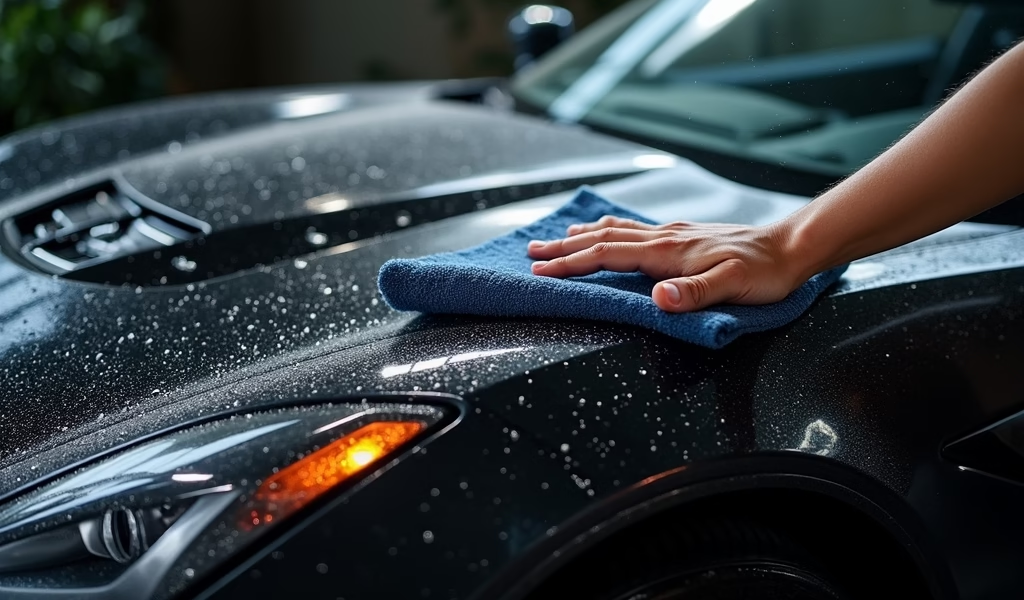Overview
This article provides a detailed guide to selecting and using high-quality microfiber towels for car washing, emphasizing how proper towels prevent paint damage and maintain vehicle value. It covers microfiber technology, GSM ratings, recommended products across price points, proper usage techniques, towel maintenance, and common mistakes to avoid when detailing vehicles.
Table of Contents
- Introduction to Car Wash Towels
- Why Quality Car Wash Towels Matter
- The Magic of Microfiber Towels
- Top Picks for Scratch-Free Car Wash Towels
- GSM Explained: Finding the Right Thickness
- Proper Usage Techniques
- Caring for Your Car Wash Towels
- Common Mistakes to Avoid
- Budget-Friendly Options
- Conclusion
- Frequently Asked Questions
Introduction to Car Wash Towels
When it comes to keeping your car’s finish flawlessly fine, car wash towels are the unsung heroes of the detailing world. As a mechanic who’s seen countless paint jobs ruined by paper towels and old t-shirts (bless your hearts, DIY warriors), I can’t stress enough how crucial proper towels are to your vehicle’s appearance and value.
Think of your car’s paint as delicate skin that needs gentle care. Just as you wouldn’t scrub your face with sandpaper, your vehicle deserves the tender touch of quality wash towels. The right car wash towels can be the difference between a showroom shine and a swirl-marked mess.
Throughout my years working under hoods and buffing out mistakes, I’ve watched the evolution of car wash products and tested practically every towel on the market. Today, I’ll share that knowledge so you can make informed choices for your prized ride.
Why Quality Car Wash Towels Matter
Picture this: tiny particles of dirt and grime clinging to your car’s surface like barnacles on a ship. When you drag a rough towel across the paint, you’re essentially creating microscopic scratches – death by a thousand cuts for your clear coat.
Quality matters more than you might think. Those bargain bin “microfiber” towels at the dollar store? They’re about as effective at safe cleaning as washing your car with a cheese grater. Premium car wash towels aren’t just a fancy upsell; they’re insurance for your vehicle’s appearance.
The financial math is simple. A pack of quality towels might cost you $20-30, while a professional paint correction for swirl marks can run hundreds or even thousands. Penny wise and pound foolish doesn’t begin to cover the false economy of cheap towels.
The right towels don’t just prevent damage; they actually make the entire car wash process easier and more effective. They hold more water, lift more dirt, and leave fewer streaks than their inferior counterparts. Your arms will thank you for the reduced effort, and your eyes will thank you for the superior results.

The Magic of Microfiber Towels
Let’s demystify microfiber, shall we? These aren’t your grandmother’s cotton rags. Microfiber towels are a marvel of modern textile engineering, composed of incredibly fine synthetic fibers – often 100 times thinner than a human hair. This microscopic size creates a cleaning surface with more edges and surface area than traditional materials could ever dream of.
The science behind microfiber is fascinating. Each fiber acts like a tiny hook, capturing dust and dirt particles rather than pushing them around. It’s like having millions of miniature cleaning assistants working simultaneously on your paint surface. Additionally, the structure creates small channels that wick away moisture and trap contaminants.
Not all microfiber is created equal, though. The split-fiber variety is the gold standard for automotive care. These fibers are chemically split at the ends to create even more cleaning edges per fiber. When shopping, look for towels specifically labeled as “split microfiber” for optimal results.
The benefits of quality microfiber over cotton or other materials are night and day. Microfiber absorbs up to seven times its weight in water, dries in half the time, and doesn’t leave lint behind. As Consumer Reports points out, microfiber towels significantly reduce the risk of scratching compared to traditional materials.
Top Picks for Scratch-Free Car Wash Towels
After testing dozens of brands through countless wash cycles, I’ve narrowed down the field to these scratch-free champions that won’t bust your budget:
For General Washing
- The Rag Company “Creature” Edgeless Towels – These 70/30 blend towels (70% polyester, 30% polyamide) are plush enough for safe contact but effective enough to lift dirt without excessive pressure. The edgeless design means no rough borders to leave marks.
- Chemical Guys Professional Grade Premium Microfiber Towels – A workhorse set with a silk-lined edge that glides over paint like butter on a hot pan. Their durability is legendary among professional detailers.
- Meguiar’s X2020 Supreme Shine – These mid-range options offer excellent value with a dual-sided design: plush for drying, tight weave for polishing.
For Drying
- Griot’s Garage PFM Terry Weave Drying Towel – This behemoth can absorb enough water to make you wonder if your car is actually dry before you’ve even finished. The waffle pattern increases surface area for maximum absorption.
- Adam’s Great White Drying Towel – Thick, plush, and thirsty as a camel in the desert, this oversized towel makes quick work of water droplets without requiring multiple passes.
For Glass and Detail Work
- Kirkland Signature Ultra High Pile Premium Microfiber Towels – Don’t let the Costco branding fool you; these are surprisingly high-quality and perfect for interior detailing and glass.
- Zwipes Microfiber Cleaning Cloths – These budget-friendly options are thin enough for precision work but still soft enough not to scratch delicate surfaces.
When building your car wash kit, I recommend having at least three categories of towels: washing, drying, and detail work. Using the right tool for each job makes a world of difference in the final result.
GSM Explained: Finding the Right Thickness
GSM stands for “grams per square meter” – essentially a measure of a towel’s density and plushness. Think of it as the thread count of your microfiber towels. The higher the GSM number, the thicker and more absorbent the towel, but that doesn’t always mean better for every purpose.
Let’s break down the GSM spectrum to help you navigate the numbers:
- 200-350 GSM: Lightweight towels ideal for glass cleaning, interior surfaces, and quick detailers. These thinner towels can get into tight spaces and are less likely to leave lint on glass.
- 400-600 GSM: Mid-weight all-purpose towels. The jack-of-all-trades in your arsenal, suitable for most washing and waxing tasks.
- 700-900+ GSM: Premium heavyweight towels designed primarily for drying and buffing. These plush options hold tremendous amounts of water and provide maximum protection against scratching.
Despite what some marketing might suggest, higher isn’t always better. Using a 900 GSM towel for glass cleaning would be like writing a grocery list with a paintbrush – technically possible, but hardly efficient. According to professional detailers at AutoGeek, matching the right GSM to the task is more important than simply buying the highest number.
My professional recommendation? Start with a variety pack that includes different GSM ratings. As you develop your detailing style, you’ll naturally gravitate toward certain towels for specific tasks.

Proper Usage Techniques
Even the finest microfiber towels in the world can’t work their magic if used incorrectly. Let’s dive into some tried-and-true techniques that separate weekend warriors from detailing ninjas.
First, the golden rule: fold, don’t wad. Create a flat working surface by folding your towel into quarters. This gives you eight clean surfaces to work with (four on each side). When one section gets dirty, refold to expose a fresh section – don’t drag contamination across your paint.
Use gentle, straight-line motions rather than circular ones. Circular motions can create those dreaded swirl marks that catch the sunlight just right to make you cringe. Straight lines in one direction, then another, lift dirt safely away from the surface.
For drying, pat don’t drag whenever possible. The blotting method might take a bit longer, but it significantly reduces the risk of dragging any lingering particles across the surface. Start at the top of the vehicle and work your way down, as lower panels tend to be dirtier.
Keep separate towels for different areas. The towel you use on your wheels should never touch your paint, and the one you use on your exhaust tips definitely shouldn’t go near your windows. Cross-contamination is a rookie mistake that can have expensive consequences.
Caring for Your Car Wash Towels
Your microfiber towels need love too! Proper care extends their lifespan and maintains their scratch-free properties. Neglect them, and you might as well be washing your car with leftover sandpaper.
Washing guidelines that’ll keep your towels in tip-top shape:
- Wash new towels before first use to remove manufacturing residues and increase absorption.
- Use liquid detergent only – powder detergents can lodge in the fibers.
- Skip the fabric softener! It coats the fibers and reduces their effectiveness.
- Wash in warm (not hot) water to help release oils and waxes without damaging the fibers.
- Keep separate from cotton items to avoid lint transfer.
- Air dry or tumble dry on low heat – high heat can melt the synthetic fibers.
Storage might seem trivial, but it matters. Store your clean towels in a sealed container to prevent dust and contaminants from settling on them. Nothing defeats the purpose of premium towels faster than improper storage that collects abrasive particles.
When should you retire a towel? Look for signs like fraying edges, stains that won’t wash out, or a general stiffness that persists after washing. Typically, with proper care, quality microfiber should last 100+ washes before retirement. When they’re past their prime for paint, demote them to wheel or engine bay duty rather than throwing them away.
Common Mistakes to Avoid
Even well-intentioned car enthusiasts make mistakes that can turn a simple wash into a paint correction nightmare. Let me save you some heartache by highlighting the most common blunders I’ve witnessed over the years.
Dropping towels on the ground is detailing sin number one. That pristine microfiber becomes sandpaper the moment it hits your driveway. If gravity gets the best of you, that towel is now relegated to wheel duty or needs a thorough washing before touching paint again.
Using excessive pressure is another frequent faux pas. Let the towel do the work! Microfiber doesn’t need your muscle – its structure is designed to lift and trap particles with minimal pressure. Pressing harder doesn’t clean better; it just grinds potential contaminants deeper into your clear coat.
Mixing towel types without a system leads to cross-contamination disaster. That bright idea to use the same towel on your wheels and then your paint? That’s how you get brake dust embedded in your clear coat faster than you can say “paint correction.”
Rushing the process is perhaps the deadliest sin of all. Quality detailing is meditative – a zen-like process that requires patience and attention. When you rush, you cut corners, and your paint pays the price. As we say in the shop, “Haste makes waste… and swirl marks.”
Budget-Friendly Options
Not everyone can drop a Benjamin on premium detailing towels, and that’s perfectly fine. You can achieve excellent results without breaking the bank if you know where to look and what compromises are acceptable.
Bulk packs offer tremendous value for the budget-conscious. Stores like Costco and Amazon frequently offer multi-packs of decent quality microfiber at prices that make economic sense. The Kirkland Signature microfiber towels mentioned earlier are the perfect example – not the absolute best, but far better than using old t-shirts.
For those truly pinching pennies, prioritize quality over quantity. It’s better to have three excellent towels that you wash between uses than 20 mediocre ones that might damage your paint. Focus your budget on at least one premium drying towel, as this stage presents the highest scratch risk.
Don’t overlook seasonal sales from automotive retailers. Black Friday and Cyber Monday typically bring steep discounts on quality detailing supplies. Stock up during these events to stretch your dollar further without compromising quality.
Remember, the cheapest option is rarely the most economical in the long run. One set of quality towels that lasts years is far more budget-friendly than repeatedly buying cheap replacements that might damage your vehicle’s finish.
Conclusion
We’ve journeyed through the plush landscape of car wash towels, from the science of microfiber to practical usage techniques. The right towels aren’t just an accessory – they’re essential armor protecting your vehicle’s finish from the microscopic battlefield of washing and drying.
Whether you opt for premium options with sky-high GSM ratings or budget-friendly alternatives that get the job done, understanding the fundamentals of proper selection, use, and care will elevate your detailing game to professional levels.
Remember that your vehicle is likely one of your most significant investments. Protecting its finish with quality car wash towels is one of the most cost-effective ways to maintain its appearance and value over time. The modest investment in proper tools pays dividends every time you catch that perfect reflection in your flawless paint.
Now that you’re armed with expert knowledge, it’s time to retire those old t-shirts and paper towels. Your car deserves better – and with the right car wash towels in your arsenal, you’ll be amazed at the results you can achieve in your own driveway.
Frequently Asked Questions
How often should I replace my car wash towels?
Quality microfiber towels should last 100-150 washes with proper care. Replace them when they become stiff, frayed, or don’t absorb water effectively anymore.
Can I use the same towels for drying and applying wax?
No, use dedicated towels for each task. Drying towels are typically higher GSM for absorption, while wax removal requires medium GSM towels with specific weave patterns.
Is it better to machine dry or air dry microfiber towels?
Air drying is ideal but if using a dryer, only use low heat. High heat can melt the synthetic fibers and permanently damage the towels.
What’s the difference between edged and edgeless microfiber towels?
Edgeless towels have no border or stitching, eliminating any risk of scratching from harder thread. Edged towels have a sewn border that provides durability but requires more careful use near paint.
Can I use regular laundry detergent on microfiber towels?
It’s best to use dedicated microfiber detergent or free-and-clear liquid detergent. Avoid powders, fabric softeners, and detergents with additives that can clog the microfiber structure.

